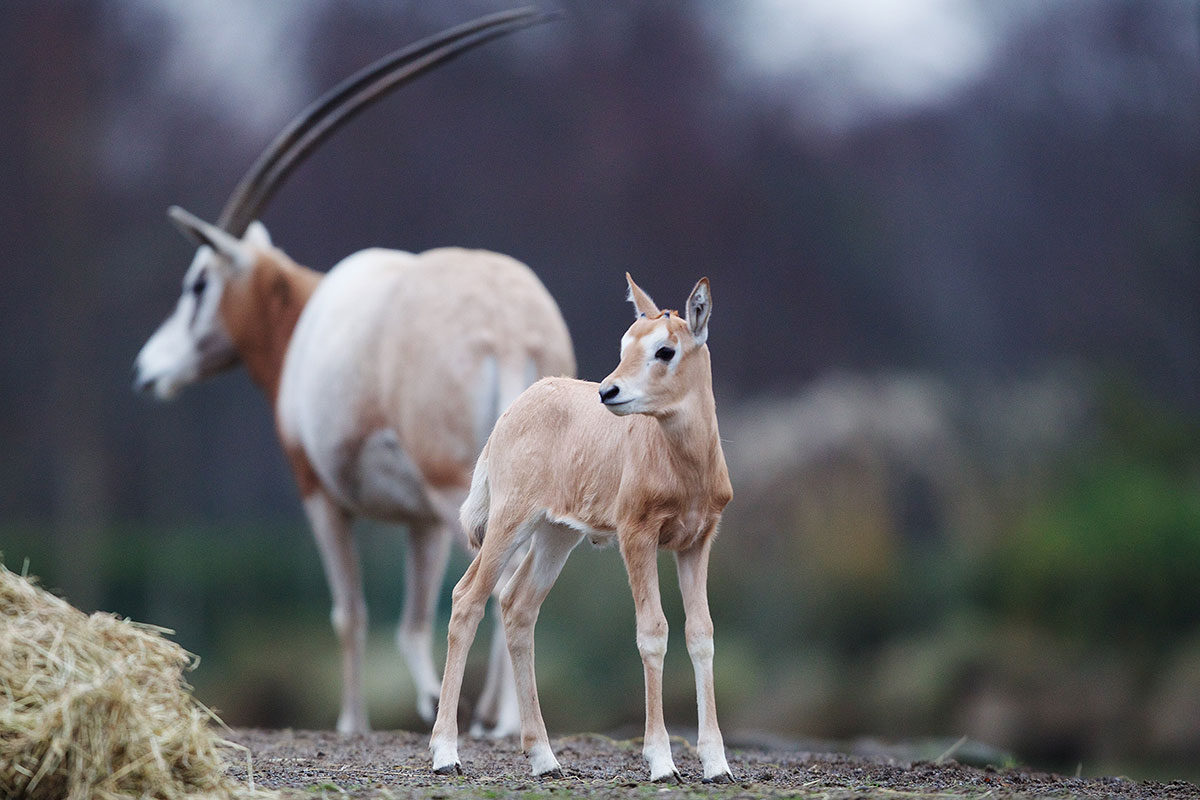Dublin Zoo Oryx New Arrival

Scimitar-Horned Oryx Born at Dublin Zoo!
Dublin Zoo is celebrating the birth of a male scimitar-horned oryx, a species classified as extinct in the wild*. Born on 8th December 2016, the newest addition to the herd brings its total to four.
The scimitar-horned oryx was once widespread across northern Africa but due to overhunting, habitat loss and competition with domestic livestock, they have gradually disappeared from the wild. The species have now been classified as extinct in the wild by the International Union for Conservation of Nature (IUCN), as there has been no definitive evidence of their presence in the wild for more than 15 years.
Since 2013, Dublin Zoo has financially supported the reintroduction programme for the scimitar-horned oryx in Tunisia. Through conservation breeding programmes, zoo-bred oryx have been reintroduced into semi-wild areas in four national parks across Tunisia. Currently there are over 200 oryx in such semi-wild areas.
Commenting on the birth, team leader Helen Clarke-Bennet said, “We are absolutely thrilled with the new arrival and recognise the significance of this birth in the conservation of the scimitar-horned oryx. The calf has shown strong signs of settling into its new surroundings and is mixing extremely well with the rest of the herd.”
Record Visitor Levels
After a bumper year with many new arrivals, Dublin Zoo is thrilled to announce its highest ever visitor numbers with 1,143,904 people passing through the gates in 2016 – over 40,000 more than 2015. Exceeding the one-millionth mark for the sixth year running, the 2016 footfall figure confirms Dublin Zoo as Ireland’s most popular family attraction.
Dublin Zoo Opening Hours
Dublin Zoo is open seven days a week from 9.30am to 4.30pm in January. For further information, visit or
*The IUCN Red List of Threatened Species (Version 3.1) lists the scimitar-horned oryx as “Extinct in the Wild”. A number of factors have contributed to this species decline including over-hunting, war, development, drought and competition with domestic livestock



